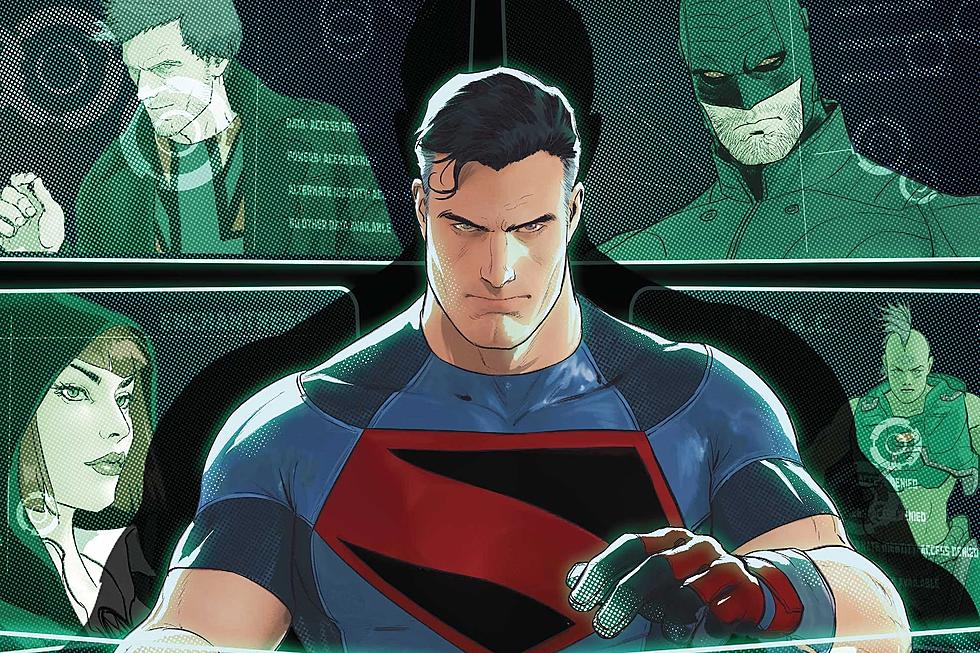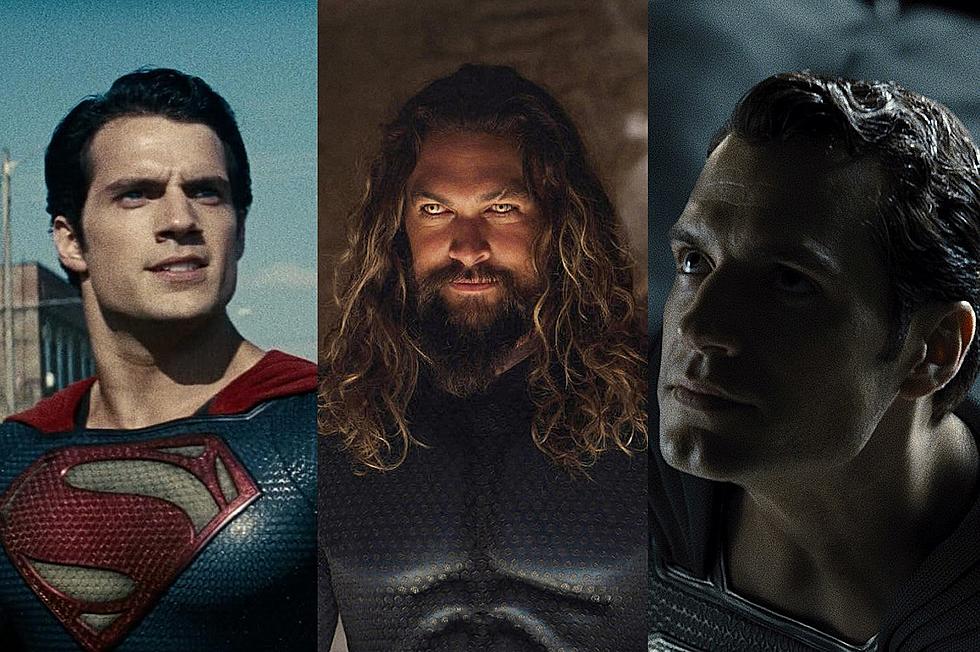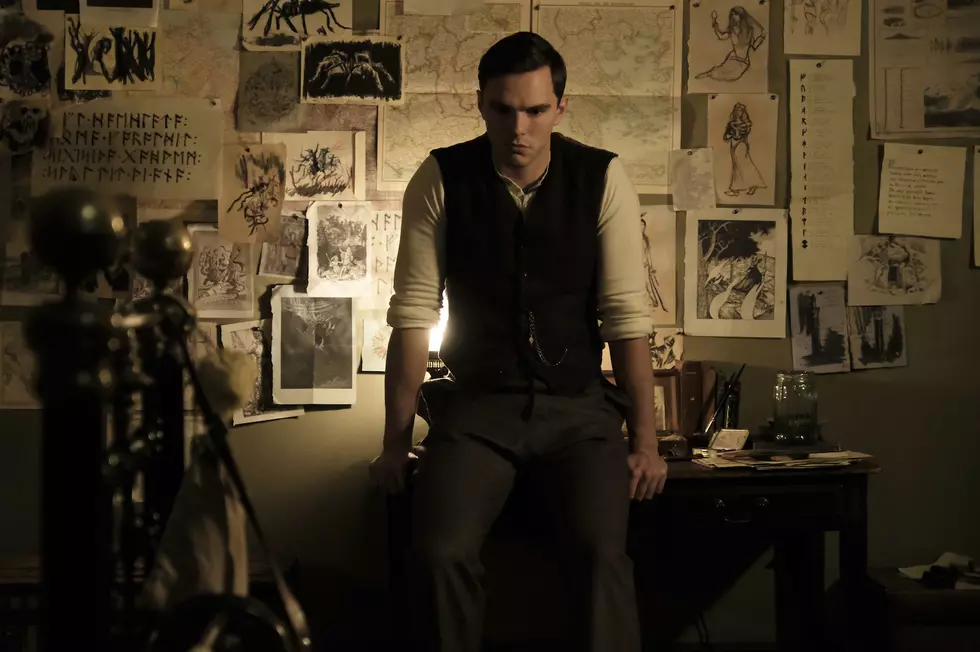
The Complete History of Comic-Book Movies, Chapter 7: ‘Superman’ (1948)
ScreenCrush editor, comic-book lover, and undiagnosed masochist Matt Singer is systematically watching every single (American) comic-book movie ever made in the order in which they were released. This week in The Complete History of Comic-Book Movies: Faster than a speeding bullet, the Man of Steel arrives on the big screen.
Superman (1948)
Director: Spencer Gordon Bennet and Thomas Carr
Writers: Lewis Clay, Royal K. Cole, Arthur Hoerl, George H. Plympton, Joseph F. Poland
Starring: Kirk Alyn, Noel Neill, Carol Forman
Based on: Superman, created by Jerry Siegel and Joe Shuster in Action Comics #1
Onscreen Iteration: First appearance
The Best Special Effect: Just one serial into Superman’s movie career, Hollywood already had his super-strength down to a science. Just give the actor playing him (in this case, Kirk Alyn) a prop that looks like it’s made out of solid steel but is actually made out of rubber, and let him bend it all to hell. In Chapter 5, Supes ties up some thugs by ripping the fender off a car and then wrapping it around their unconscious bodies. In Chapter 11, Lois Lane (Noel Neill) gets Clark Kent arrested to snag the exclusive on a killer story, so Superman bends the bars of his jail cell to escape.
It’s not fancy, but it’s mighty convincing.
The Worst Special Effect: Just one serial into Superman’s movie career, Hollywood still had a long way to go when it came to portraying flight onscreen. Although Republic had already sent Captain Marvel aloft with dummies on wires and rear projection screens, Columbia and directors Spencer Gordon Bennet and Thomas Carr decided to go a different route with Superman: Whenever the Man of Steel takes to the skies, he’s replaced by an animated figure. Once Alyn leaps into the air, it’s up...
Up...
And replaced!
You will believe a crudely drawn animated figure can fly.
The animated Superman looks a little better in motion, and the film does a decent job of blending the live-action takeoffs with the cartoon flight. But Bennet and Carr’s team never perfected the transitions from animation back to live-action on the landings, which means Superman always drops down behind a car or tree, or into an alley or open window, followed by a quick cut and a close-up of Alyn.
That’s not fancy or convincing. The animated Superman moves gracefully through the air, but the landings are so obvious and distracting that they kill whatever illusion the drawings create. They should have just stuck with the Captain Marvel flying dummy.
Most Dated Moment: In Chapter 10, Clark and Lois pick up a radio distress signal that a kidnapped scientist sends out along the telephone lines. To triangulate his location, Lois drives around with some equipment then delivers vital information back to Clark via “walkie-talkie.” This is what a walkie-talkie looked like in 1948:
And you thought Zach Morris’ cell phone was big.
Most Timeless Moment: Superman starts with Superman’s origin, and it is largely the same one that appears in 2013’s Man of Steel: Kryptonian scientist Jor-El warns a council of his planet’s elders that it is doomed, they refuse to listen, Baby Superman is shipped off in a rocket, Krypton explodes. The parallels with Man of Steel continue into Clark Kent’s teen years, when his life is set on its heroic path by an incident involving a powerful tornado. In Man of Steel, Clark is unable to save his father from a freak storm; in Superman, he does (because that’s what Superman does, guys). The effects are certainly better in the modern version, but the parable still resonates strongly in the 70-year-old film. If anything, it’s even more powerful today; the Kryptonian government ignoring Jor-El’s predictions now plays like a Congressional hearing on climate change.
Further Thoughts: This is a lesson in context. One of the least appealing parts of modern comic-book movies are the glut of origin stories. Why rehash Peter Parker getting bitten by the radioactive spider for the umpteenth time when you could tell us a totally new tale we’ve never seen before?
Ironically, the Superman serial feels fresh specifically because it starts at the very beginning. That means it doesn’t follow the superhero serial formula of a mysterious bad guy and their army of goons all chasing after a MacGuffin of incredible power, at least for a few chapters.
By Chapter 3, Superman does settle into that familiar routine, with a masked foe named the Spider Lady (Carol Forman) scouring Metropolis for a “Reducer Ray,” and later a mineral named “mono-chromite” she needs to wield this unstoppable weapon. Before that, though, directors Bennet and Carr provide an entertaining retelling of Superman’s origin, down to his getting a job at the Daily Planet (he just walks into Perry White’s office and asks for one, because that’s apparently what the journalism job market was like back in 1948) and the beginnings of Clark’s rivalry with ace reporter Lois Lane.
Almost every superhero serial so far has relied on a repetitive wild goose chase plot to keep its characters circling one for all the screen time needed to fill 15 chapters of action, but Superman features some of the most flagrant rehashes to date. On two totally separate occasions, Chapters 5 and 12, Superman tracks down a pair of the Spider Lady’s henchmen in the desert, stops their car, then bullies them into a confession. Both times the thugs insist they don’t know the Spider Lady and were hired by another man entirely; both times Superman threatens them with the exact same line (“Sometimes I don’t know my own strength!”). Serials, Superman included, often recycled special effects shots to save money. But recycling entire dialogue scenes? That’s not frugal. That’s just lazy.
It is interesting to see which elements of the Superman character were already in place by 1948, and which elements were not. Kirk Alyn’s Superman shouts “Up, up, and away!” when he leaps tall buildings in a single bound (a device originated by the Superman radio show to let listeners know when the character was flying), and the core Daily Planet staff is all present and accounted for (Pierre Watkin’s gruff, cigar-chomping Perry White feels particularly archetypal). But some of Superman’s powers are missing in action (there’s no heat vision, which didn’t get introduced in the pages of Action Comics until 1961), and at this point he fights for "Truth, tolerance, and justice." (“The American way” would come later, in the ’50s Superman television show.)
One eyebrow-raising moment involves Eben Kent, who gives young Clark a motivational talk about the importance of his superhuman gifts. “Because of these great powers,” Eben says, “your speed and strength, your X-ray vision and super-sensitive hearing, you have a great responsibility.” It sounds an awful lot like the credo Stan Lee would give to Spider-Man some 15 years later in the pages of Amazing Fantasy #15, and it’s hard to imagine Lee never saw this serial and wasn’t at least a little influenced by it.
Producer Sam Katzman supposedly auditioned over 100 actors for the role of Superman before he settled on Alyn, and even after he chose him, he didn’t credit the actor for his work. Hoping to boost the serial’s profile, Columbia’s publicity department tried to claim that the “real” Superman — the “real” super-powered alien from a comic book —played himself onscreen. As a result, Alyn’s name is nowhere to be seen in each episode’s credits, or the serial’s trailer. (He does get a mention on Superman’s posters, below Superman himself.)
I have to imagine the “real” Superman would move around a little more gracefully than Alyn, who runs stiffly around Metropolis like a man in double leg casts or an alien who hasn’t fully acclimated to Earth’s gravity. Otherwise though, he makes a fine Man of Steel. He fills out the character’s signature tights convincingly, and wears his era-specific high-waisted briefs with as much dignity as humanly possible. Alyn’s also got a broad cheshire smile that he flashes in fights, and his slightly mischievous portrayal jives nicely with DC Comics’ Superman of that period, who was a little less of a simple do-gooder and a little more of an anarchist roughneck.
Columbia’s marketing scheme might have been a little insulting to its leading man, but it worked. According to Glen Weldon’s excellent book Superman: The Unauthorized Biography, the first Superman was the most financially successful serial in history, grossing more than $1 million and more than recouping its record-breaking budget of $350,000. Creatively speaking, it’s more of a mixed bag. The cast is better than a lot of the serials I’ve watched so far (Neill is particularly feisty), and there are some strong chase sequences. But there’s also plenty of time-killing and the number of duplicate effects and stunts is less than ideal.
Still, there’s no question Superman is a hugely important film. Not only did it introduce the Man of Steel to the silver screen, it was also the first true comic-book blockbuster. It cost a lot and made even more, setting a template that would, with time, become Hollywood’s core business model. It was also groundbreaking in another significant way — to find out how, don’t fail to read “The Complete History of Comic-Book Movies, Chapter 9: Atom Man vs. Superman” at this very website! (Sorry, all the cliffhangers are getting to me.)
Superman (1948) is currently available on DVD.
The Complete History of Comic-Book Movies Archive
-Adventures of Captain Marvel (1941)
-Spy Smasher (1942)
-Batman (1943)
-Captain America (1944)
-Hop Harrigan (1946)
-The Vigilante (1947)
More From ScreenCrush









